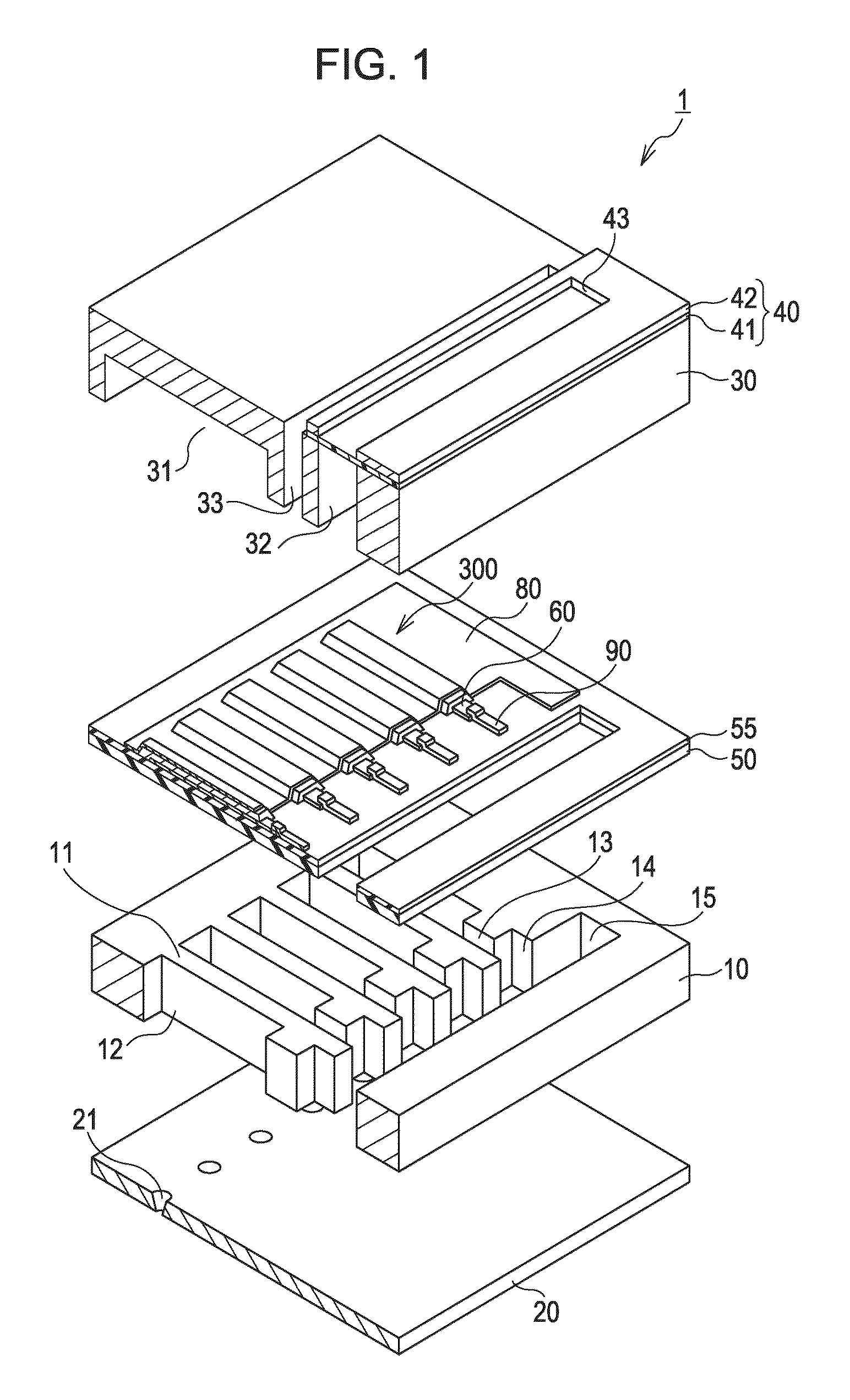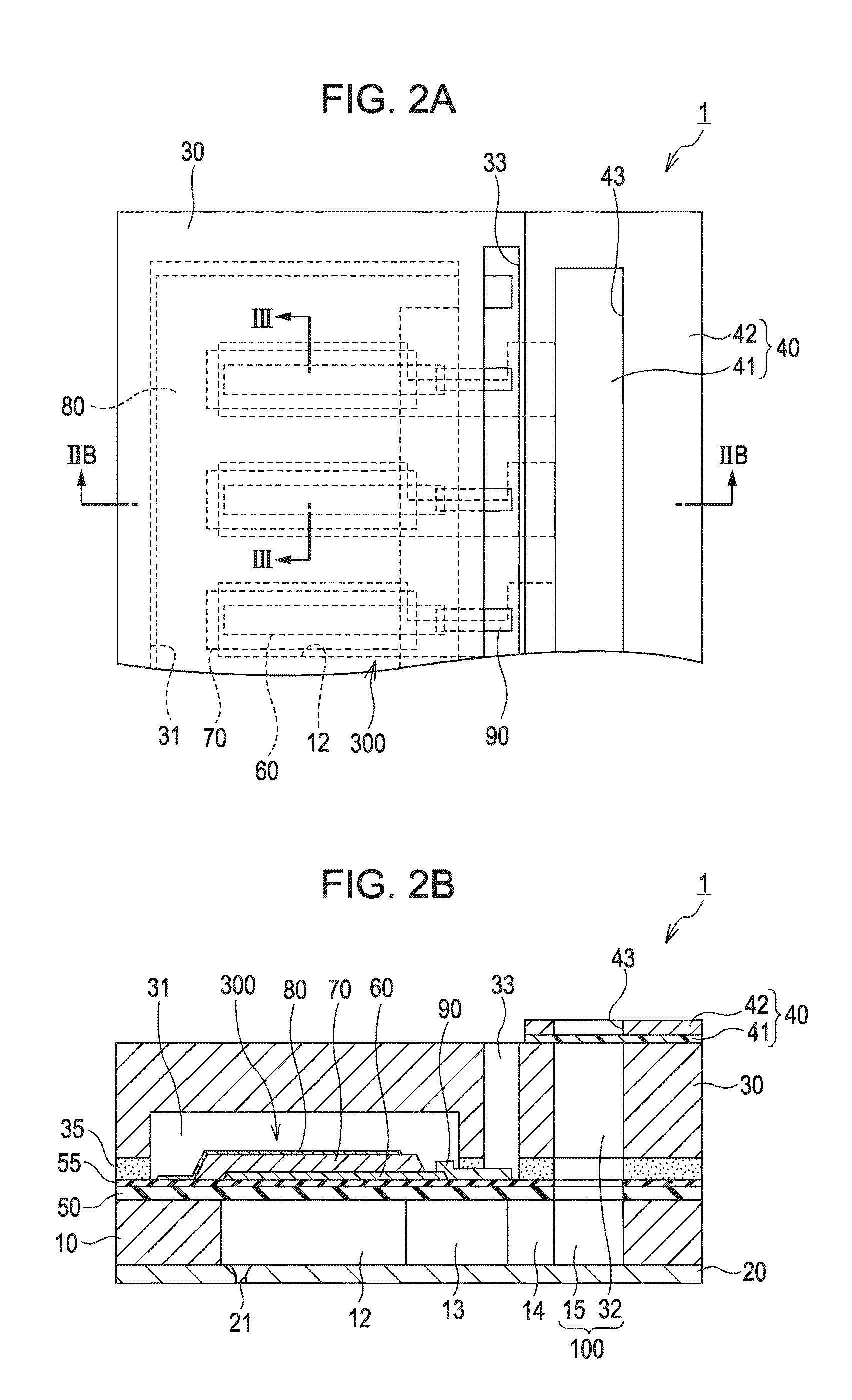Precursor solution for piezoelectric films, method for manufacturing the same, and method for manufacturing piezoelectric film
a technology of precursor solution and piezoelectric film, which is applied in the direction of liquid/solution decomposition chemical coating, coating, basic electric elements, etc., can solve the problems of reducing the storage stability of precursor solution, limiting the potential for productivity improvement, and affecting the production efficiency of piezoelectric films by any known method, etc., to achieve satisfactory thermal decomposability, reduce adverse effect of piezoelectric properties, and sufficient stress relaxation
- Summary
- Abstract
- Description
- Claims
- Application Information
AI Technical Summary
Benefits of technology
Problems solved by technology
Method used
Image
Examples
embodiment 1
Precursor Solution for Piezoelectric Films
[0164]The following describes the piezoelectric film precursor solution according to Embodiment 1. The piezoelectric film precursor solution according to Embodiment 1 is a precursor solution for the formation of a piezoelectric film (a piezoelectric element) by a liquid-phase method.
[0165]The piezoelectric film precursor solution according to Embodiment 1 is a solution obtained by mixing the organic metal compounds constituting the intended composite oxide and a solvent component. The precursor solution is prepared at the solution preparation stage mentioned above. Specifically, the precursor solution is obtained by mixing the following raw materials and stirring the mixture: a selected carboxylic acid or acids, e.g., acetic acid and / or propionic acid (the solvent component); lead-, zirconium-, and titanium-based organic metal compounds; and a polymeric component. The carboxylic acids that can be used in this embodiment are ones having a sta...
example 1-1
[0189]In a 200-mL glass flask 43.0 g of acetic acid (the solvent component) was weighed. To this, 14.0 g of the n-butanol solution of zirconium tetra-n-butoxide (the zirconium source; concentration: 86.0% by mass) and 8.4 g of titanium tetraisopropoxide (the titanium source) were added. The obtained mixture was stirred with a magnetic stirrer at room temperature, or more specifically 25° C., for 30 minutes to yield a mixed solution. To this mixed solution 27.3 g of lead (II) acetate trihydrate (the lead source) and 6.8 g of polyethylene glycol (the polymeric component; weight-average molecular weight: 600) were added. The obtained mixture was heated and stirred in an oil bath at 80° C. for 1 hour to complete the PZT precursor solution.
[0190]FIG. 10 presents the weight measurements of the solvent, the metal sources, and the polymer used in this example. The metal oxide content of the PZT precursor solution of this example (the content of the metal elements calculated on the assumptio...
example 1-2
[0191]The PZT precursor solution was obtained in the same way as in Example 1-1 except that the solvent component consisted of 50.0 g of acetic acid. The weight measurements of the solvent, the metal sources, and the polymer used in this example are also presented in FIG. 10. The metal oxide content and the raw-material-derived carboxylic acid content in the total amount of the raw materials calculated for this example in the same way as in Example 1-1 were 20.9% by mass and 46.9% by mass, respectively.
PUM
| Property | Measurement | Unit |
|---|---|---|
| molecular weight distribution | aaaaa | aaaaa |
| molecular weight distribution | aaaaa | aaaaa |
| thickness | aaaaa | aaaaa |
Abstract
Description
Claims
Application Information
 Login to View More
Login to View More - R&D
- Intellectual Property
- Life Sciences
- Materials
- Tech Scout
- Unparalleled Data Quality
- Higher Quality Content
- 60% Fewer Hallucinations
Browse by: Latest US Patents, China's latest patents, Technical Efficacy Thesaurus, Application Domain, Technology Topic, Popular Technical Reports.
© 2025 PatSnap. All rights reserved.Legal|Privacy policy|Modern Slavery Act Transparency Statement|Sitemap|About US| Contact US: help@patsnap.com



